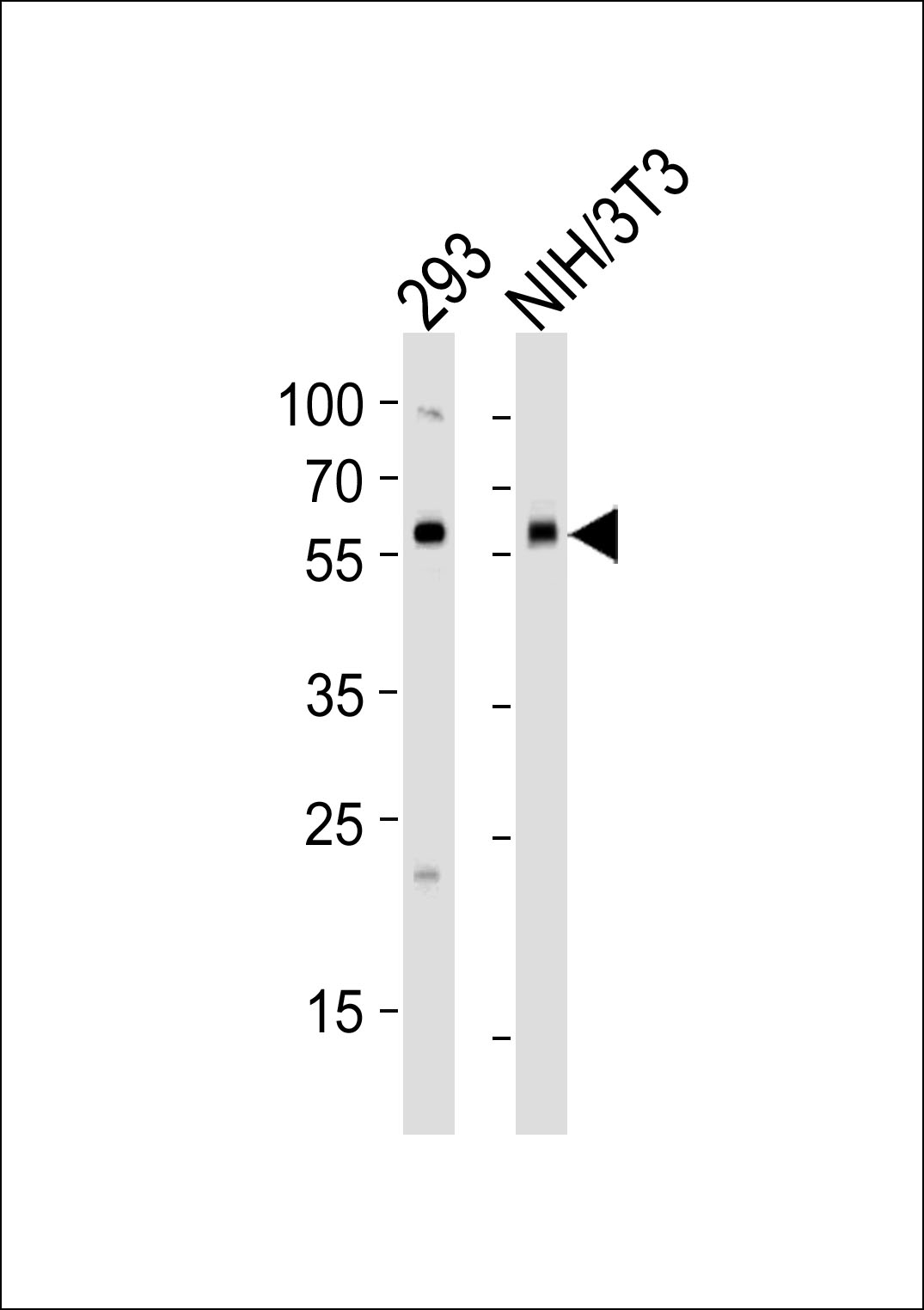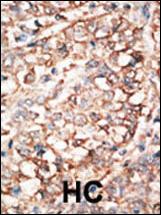产品名称
BMPR1A Rabbit Polyclonal Antibody (C-term)
别名
Bone morphogenetic protein receptor type-1A, BMP type-1A receptor, BMPR-1A, Activin receptor-like kinase 3, ALK-3, Serine/threonine-protein kinase receptor R5, SKR5, CD292, BMPR1A, ACVRLK3, ALK3
存储缓冲液
Purified polyclonal antibody supplied in PBS with 0.09% (W/V) New type preservative N. This antibody is prepared by Saturated Ammonium Sulfate (SAS) precipitation followed by dialysis against PBS.
Human Gene ID
NP_004320.2
Human Swissprot No.
P36894
特异性
This BMPR1A antibody is generated from rabbits immunized with a KLH conjugated synthetic peptide between 166-196 amino acids from the C-terminal region of human BMPR1A.
稀释度
WB~~1:1000;IHC-P~~1:100~500
运输及保存条件
Maintain refrigerated at 2-8°C for up to 2 weeks. For long term storage store at -20°C in small aliquots to prevent freeze-thaw cycles.
背景介绍
The bone morphogenetic protein (BMP) receptors are a family of transmembrane serine/threonine kinases that include the type I receptors BMPR1A and BMPR1B and the type II receptor BMPR2. These receptors are also closely related to the activin receptors, ACVR1 and ACVR2. The ligands of these receptors are members of the TGF-beta superfamily. TGF-betas and activins transduce their signals through the formation of heteromeric complexes with 2 different types of serine (threonine) kinase receptors: type I receptors of about 50-55 kD and type II receptors of about 70-80 kD. Type II receptors bind ligands in the absence of type I receptors, but they require their respective type I receptors for signaling, whereas type I receptors require their respective type II receptors for ligand binding.
组织表达
Highly expressed in skeletal muscle.
细胞定位
Cell membrane {ECO:0000250|UniProtKB:P36898}; Single-pass type I membrane protein. Cell surface {ECO:0000250|UniProtKB:P36895}
功能
On ligand binding, forms a receptor complex consisting of two type II and two type I transmembrane serine/threonine kinases. Type II receptors phosphorylate and activate type I receptors which autophosphorylate, then bind and activate SMAD transcriptional regulators. Receptor for BMP2, BMP4, GDF5 and GDF6. Positively regulates chondrocyte differentiation through GDF5 interaction. Mediates induction of adipogenesis by GDF6.



